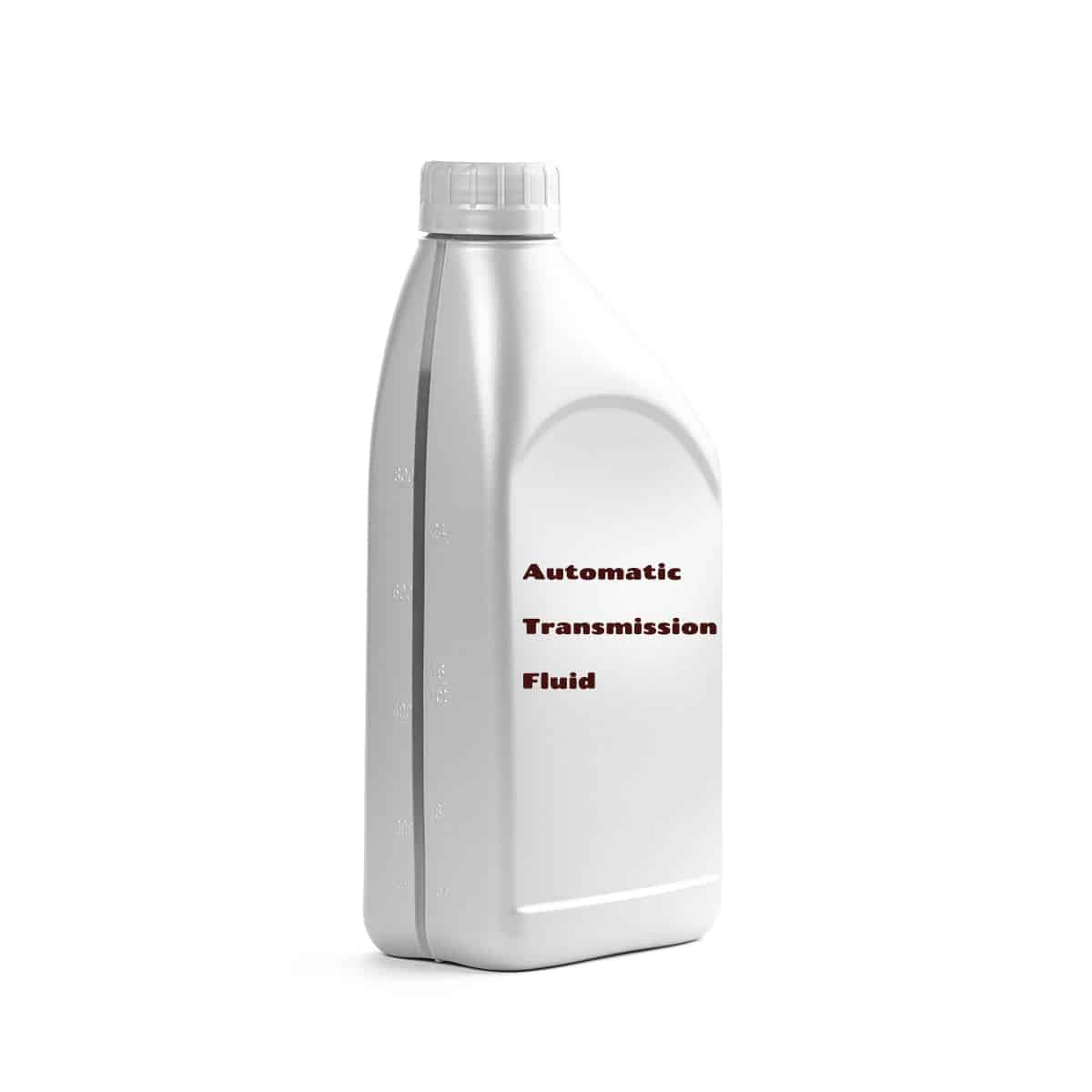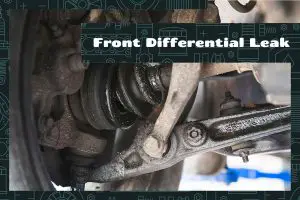Automatic Transmission Fluid (ATF) carries the power from the engine to the gearbox. It ensures the gears shift smoothly and the vehicle runs efficiently. However, there is so much we can learn about this fluid, such as what it actually does and its various types.
Automatic transmission fluid is a special lubricant used in vehicles with self-shifting or automatic transmissions. It comes in different types, such as:
- Conventional ATF
- Synthetic ATF
- Dexron/Mercon
- Type F
- HFM Fluids
In this article, we will delve deeper into the ins and outs of ATF, what its types are, and how it compares to other transmission fluids.
What Is Automatic Transmission Fluid?

Automatic Transmission Fluid, or ATF, is an essential component of any vehicle equipped with an automatic transmission. It serves multiple important functions that ensure your car operates smoothly and efficiently.
When you change gears in your vehicle, the ATF is what makes the transition smooth. It also cools and lubricates the moving parts within your car’s transmission by reducing friction between the gears, thereby preventing wear and tear and even extending the life of your transmission system.
Composition of Automatic Transmission Fluid
ATF is a carefully crafted blend of base oils and additives. The base oil, which makes up the majority of the fluid, provides the necessary lubrication. The additives, however, are the secret sauce.
These ingredients are specially designed to handle the challenging conditions within your vehicle’s transmission. Also included are detergents to keep the transmission clean, anti-wear agents to protect the gears, and viscosity modifiers to ensure the fluid works effectively in all temperatures.
Role of Automatic Transmission Fluid in Vehicle Performance
The role of ATF in a vehicle’s performance can’t be overstated. By providing smooth gear shifts, it ensures your ride is comfortable. It also improves your vehicle’s fuel efficiency because when gears shift smoothly, the engine doesn’t have to work as hard.
Furthermore, by cooling and lubricating the internal parts of the transmission, ATF prevents overheating and reduces the risk of costly repairs.
What Is Automatic Transmission Fluid Color?
The ATF is not just a random attribute; it holds vital information about the condition of the fluid and, by extension, the state of your vehicle’s transmission. In this section, we’ll explore what the color of ATF means, why it changes, and what different colors indicate.
ATF Color Significance
New ATF typically has a transparent, red color. This is an industry-standard, making ATF distinct from other fluids in your car. Its transparency allows you to see the fluid’s condition clearly. As the ATF ages and wears, its color, transparency, and thickness may change, giving you visual cues about its condition and when it might need to be replaced.
Interpreting Different ATF Colors
Each color signifies a different state of fluid health.
- Bright Red: This is the color of the new ATF. If your fluid is this color, it’s in good condition.
- Light Brown: Over time, ATF may turn light brown but remain transparent. This is normal as the fluid ages, but you should keep an eye on it.
- Dark Brown or Black: If your ATF has turned dark brown or black, it is a sign of aging fluid that’s collected a lot of dirt and wear materials from the transmission. It should be changed soon.
- Black and Opaque: If your ATF is not just dark but also opaque, it needs immediate attention. This color often signifies overheating and severe contamination.
Checking ATF Color
Checking your ATF color is a simple yet crucial part of routine vehicle maintenance. It’s recommended to check the ATF level and color every month.
To do this, locate the ATF dipstick under your vehicle’s hood. Pull it out, wipe it clean, reinsert it, then pull it out again to inspect the fluid. Note the level and color of the fluid on the dipstick. If the color is dark or the level is low, it may be time for an ATF change.
Types of Automatic Transmission Fluids
Different ATFs cater to various requirements of specific vehicle models and transmission types. Here, we’ll delve into five major types of ATF: Conventional ATF, Synthetic ATF, Dexron/Mercon, Type F, and HFM Fluids.
1. Conventional ATF
Conventional ATF, also known as traditional or standard ATF, is used in many vehicles. It is a petroleum-based fluid that provides necessary lubrication for your vehicle’s transmission system. This fluid helps in cooling down the transmission components and prevents overheating, making it suitable for a wide range of vehicles, especially older models.
2. Synthetic ATF
Synthetic ATF is a type of transmission fluid made from synthetic base oils and specific additives. This type of ATF is designed for optimal performance, particularly under severe temperatures and high loads.
It resists high-temperature breakdown better than conventional ATF, offering better protection for your transmission and leading to less wear and tear. It is primarily used in high-performance vehicles, luxury cars, and certain newer models.
3. Dexron/Mercon
Dexron/Mercon ATF is a kind of ATF that is specifically designed and approved for vehicles requiring General Motors’ Dexron specifications or Ford’s Mercon specifications. This fluid often meets the requirements of both specifications, hence the dual naming. It is essential to check your vehicle’s manual to see if it requires Dexron/Mercon ATF and to understand the specific Dexron or Mercon generation your vehicle needs.
4. Type F
Type F ATF is a specific kind of ATF that was initially made for Ford vehicles built in the 1970s and earlier. It has different frictional characteristics compared to other ATFs, so it should only be used in vehicles that specifically require Type F ATF. Using Type F ATF in a transmission designed for Dexron/Mercon or other types of ATF could potentially damage the transmission.
5. High Friction Modified (HFM) Fluids
HFM Fluids are a type of ATF that contains specific additives to modify the fluid’s friction characteristics. HFM fluids can provide better engagement and heat resistance than other fluid types, making them suitable for vehicles with high transmission loads or vehicles that do a lot of towing. Some specific brands and types of vehicles require HFM fluids.
Comparisons Between Automatic Transmission Fluid and Other Fluids
ATF is just one of many different types of fluids your car uses. In this section, we’ll compare ATF with three other crucial vehicle fluids: engine oil, brake fluid, and power steering fluid.
Automatic Transmission Fluid vs. Engine Oil
- Function: ATF is designed to lubricate the moving parts of the transmission, act as a hydraulic fluid, and cool the transmission. Engine oil, on the other hand, is meant to lubricate the moving parts inside the engine and to carry away heat from the engine.
- Viscosity: Engine oil is usually thicker than ATF. The thickness of engine oil helps it cling to engine parts to provide lasting lubrication, while the thinner ATF is meant to flow easily through the complex parts of the transmission.
- Change Interval: Typically, engine oil needs to be changed more frequently than ATF. Most vehicles need an oil change every 3,000 to 5,000 miles, while ATF is usually changed every 30,000 to 60,000 miles.
- Color: New engine oil is a light amber color, while new ATF is usually red. Both fluids darken with use.
Automatic Transmission Fluid vs. Brake Fluid
- Function: While ATF lubricates and cools the transmission, brake fluid is a hydraulic fluid that transfers the force of your hitting the brake pedal to the brake pads to stop the vehicle.
- Composition: Brake fluid is a glycol-based fluid, while ATF is a petroleum-based fluid with various additives. These different compositions make each fluid suited to its particular tasks.
- Boiling Point: Brake fluid has a very high boiling point to withstand the heat generated in the brake system. ATF also needs to handle heat but doesn’t require as high a boiling point since the transmission doesn’t get as hot as the brakes.
- Change Interval: Brake fluid should be replaced every two years or 30,000 miles, while ATF usually lasts longer.
Automatic Transmission Fluid vs. Power Steering Fluid
- Function: Both ATF and power steering fluids serve as hydraulic fluids, but they operate in different systems. ATF works in the transmission, while power steering fluid helps you turn your vehicle’s wheels easily.
- Viscosity: ATF and power steering fluid viscosities can be similar, but it depends on the specific vehicle. Some cars even use ATF in their power steering systems.
- Change Interval: Power steering fluid typically doesn’t need to be replaced as often as ATF. Many mechanics recommend replacing it every 80,000 miles or every seven years, whichever comes first.
- Color: New power steering fluid is often clear or a light golden color, while the new ATF is usually red.
Table Summary of ATF vs. Other Liquids
| Automatic Transmission Fluid | Engine Oil | Brake Fluid | Power Steering Fluid | |
| Function | Lubricates and cools the transmission; acts as a hydraulic fluid | Lubricates engine parts and removes heat | Transfers force from brake pedal to brake pads | Helps in easy turning of vehicle’s wheels |
| Composition | Petroleum-based fluid with additives | Petroleum or synthetic based fluid | Glycol-based fluid | Usually petroleum-based fluid |
| Viscosity | Typically thinner for easy flow | Typically thicker to provide lasting lubrication | Not as relevant, but must remain fluid in extreme cold and resist boiling in heat | Can be similar to ATF, but depends on specific vehicle |
| Change Interval | Usually every 60,000 to 100,000 miles | Usually every 3,000 to 5,000 miles | Usually every two years or 20,000 miles | Typically every 75,000 miles or every 7 years |
| Color when new | Usually red | Light amber | Varies (often light yellow to amber) | Clear or light golden |
FAQs
1. Can you use ATF in manual transmission cars?
Some manual transmissions do use ATF. This is because ATF has certain qualities, such as being able to flow easily at low temperatures and resist high temperatures, which can be beneficial in a manual transmission. The additives in ATF can also help protect the gears and synchronizers in the transmission.
However, many manual transmissions use a different type of fluid, often called manual transmission fluid or sometimes gear oil. These fluids are usually thicker than ATF and have different additives. Using ATF in a manual transmission that requires a different type of fluid can lead to insufficient lubrication and potential damage.
2. Can you use manual transmission fluid in automatic transmission cars?
Generally, manual transmission fluid should not be used in automatic transmission cars. This is because manual transmission fluid and ATF have different properties and additives to suit the different needs of manual and automatic transmissions.
ATF is designed to serve several functions in an automatic transmission. It acts as a hydraulic fluid to enable gear shifts, as a lubricant to reduce wear on the transmission’s internal parts, and as a coolant to carry away heat generated in the transmission. ATF also contains specific additives to help keep the transmission clean and prevent the formation of varnish and sludge.
On the other hand, manual transmission fluid is typically thicker and has different additives, as manual transmissions don’t require the hydraulic properties of ATF and don’t generate as much heat. Using manual transmission fluid in an automatic transmission could lead to shifting problems, overheating, and premature wear and damage to the transmission.
3. What is the best way to check the automatic transmission fluid level?
Checking the level of ATF in your vehicle is a straightforward process that you can do yourself, and it’s a good way to monitor the health of your transmission. Here’s a step-by-step guide:
- Warm Up Your Vehicle: Start your vehicle and let it run for a few minutes to warm up the transmission fluid. ATF expands when it’s hot, so checking it after it’s warmed up will give you a more accurate reading.
- Park on a Level Surface: To get an accurate reading, your vehicle should be on a level surface. Put the vehicle in park and ensure the parking brake is engaged for safety.
- Locate the Transmission Fluid Dipstick: In most cars, the ATF dipstick is located near the engine oil dipstick. It’s usually marked with a red handle.
- Remove and Clean the Dipstick: Pull the dipstick out and wipe it clean with a rag or paper towel. This will give you a clear reading when you reinsert it.
- Check the Fluid Level: Reinsert the dipstick fully, then pull it out again. Look at the markings on the end of the dipstick. The fluid level should be between the “full” and “add” lines.
- Check the Fluid Color: While you’re checking the level, also check the color of the ATF. Fresh ATF is usually red, and it should be relatively clear. If the fluid is a dark brown or black color, or if it has a burnt smell, this can indicate that the fluid is old or that the transmission is running hot.
- React Accordingly: If the fluid level is low, you should add more until it reaches the correct level. Use the type of ATF specified in your vehicle’s manual. If the fluid is dark or smells burnt, it may be time for a transmission fluid change.






